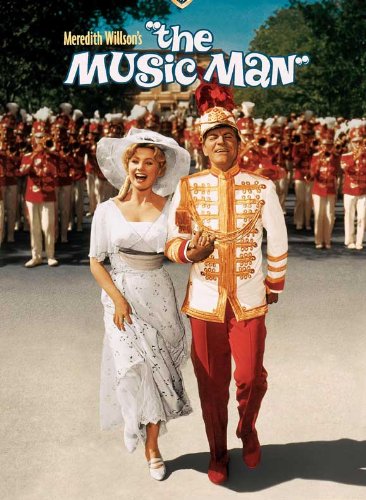
Note: This post is part of a series on the ASOR and SBL conferences in November 2018
Who doesn’t love a parade? Everybody loves a parade. As it turns out parades or processions provide an alternate approach to the creation of the Hebrew Bible from the Persian-period fixated ivory-tower scribal elite approach. The Israelite processions exhibit the oral and performance attributes of the Hebrew Bible generally obscured by the text-based biblical scholars.
Let’s examine the ASOR presentation and see what it has to offer in contrast to the text-based presentations at the SBL conference.
Performance Art and the Body in the Ancient Near East and Mediterranean
Laurel Hackley (Brown University), “Memory and the Body in Egyptian Festival Processions”
This paper addresses the body as an object and an actor in Egyptian festival processions. Public festival processions were spectacles made of bodies, as it was the massing and movement of bodies that created the event. Both spectators and participants played an active role in the creation of this event; the event in turn played a role in maintaining a ritual cycle that many different kinds of people could participate in. Embodied and sensory participation in cyclically repeating festival processions would have created personal memories. The particulars of individual bodily experience, locale, and time of year would have connected personal histories to mythological events and other narratives. This would have been reinforced by the performances associated with festival processions, in which mythological episodes were apparently reenacted. A particular focus of this paper is the role of costumed, foreign, or otherwise singular bodies. An additional investigation will be made into the role of dance and gesture in festival processions, and the existence of professionals or specialists who participated in these events. The paper draws on evidence from reliefs, texts, and material culture.
According to Hackley, Egyptians witnessed repeated parades throughout their life. These rituals aided the people to “buy” into the culture. They provide comfort to the people. She even used the term “punctuated” as the “punctuated equilibrium” sessions at the same time did (Lessons from the ASOR Conference: Punctuated Equilibrium and the Writing of the Hebrew Bible). In this case, she was referring to how the rituals punctuate time in an annual cycle. The Egyptians had monthly festivals. There could be processions on land as well as on water. They could include musicians and dancers. The national ones might have foreigners such as Nubians and Libyans to show the power of the king. Such events provided a sensory experience with the smells of food and incense and the sounds of music. As here in the United States, we approach our Roman-numeral numbered Superbowl and halftime show in February, we should be aware of the annual rhythm of our sports events in creating memories from generations to generations at the high school, college, and professional level. And where would the Summer Olympics be without the opening procession of nations following the arrival of the flag that had been carried by foot from ancient Greece?
When young William Thomas Albright (not yet “Foxwell”) was growing up in Chile, he experienced a multitude of processions and festivals. They happened to be Catholic. By coincidence when his family returned to the United States, they docked around July 4. His first impression as he absorbed the festivities of the American Independence Day was that the country was Catholic. He had to learn the ways of the country. It would seem that the Methodist father of biblical archaeology never embraced the importance of processions in ancient Israel – they were for Catholic/Baal societies and not the nomads who became Israel and were made of better stuff.
Biblical scholars certainly are aware of the parade. They know of the Egyptian festivals especially for a new king or in military triumph. The most famous of all such processions is the akitu most prominently associated with Babylon but observed elsewhere in Mesopotamia as well. Biblical scholars also frequently comment on the Babylonian influence on the formation of the Hebrew Bible. Somehow though the influences are limited to textual ones and not the akitu. Part of the reason for the minimization of the influence of the akitu on Israelite culture is because of the key person in the New Year festival: the king. For an akitu to be held or for there to be an Israelite equivalent, there has to be a king. There also had been a carried object. The idea of a charismatic king instituting an Israelite akitu with a carried object based in Jerusalem is unacceptable.
However as it turns out the Hebrew Bible does contain processions which were part of a royal-led Israelite akitu New Year fall festival. The processions just are not linked together in scholarship so the Israelite akitu remains hidden. Now consider these texts below as if they were part of a royal procession and not the creation of an ivory-tower scribal elite. And while Brown referred to mythical events in her presentation, historical events may be presented as well. The celebration of the akitu could call to mind Nebuchadnezzar I’s restoration of the statue of Marduk.
Into the Wilderness
And whenever the ark set out, Moses said, “Arise, Yahweh, and let thy enemies be scattered; and let them that hate thee flee before thee.” And when it rested, he said, “Return, O Yahweh, to the ten thousand thousands of Israel.” (Num. 10:35-36)
The first part of the New Year processions occurred when the statue of Marduk left the temple and was brought out into the wilderness. In the ancient Israelite version, the king performing in the role of Moses led the ark and the people from Zion into the wilderness, an area around Jerusalem. Perhaps they marched to the very site David had purchased from Araunah where the Jebusites once had conducted their own ceremonies (II Samuel 24:18-25). Whether a new song was composed or an existing song was incorporated into the new holiday is a separate matter.
In the wilderness, the land of chaos, there were challenges both natural and human to be overcome. The foremost battle between the forces of cosmos and chaos in the Israelite akitu was a human affair – the people who challenged the authority of Moses, the role being performed by the king. Moses and the king were triumphant in this wilderness showdown. The disruptive forces of chaos were vanquished.
These wilderness stories of cosmos and chaos are important. They became a battlefield where different political factions (scribal priests) could battle for power through supplements to the original performed story. Even when the Israelite akitu was no longer performed the texts still provided a venue through which internal political battles could be fought. In the United States similar such battle are fought again and again through the stories, parades, and celebrations of Thanksgiving, the American Revolution, and the Civil War.
Marking Turf
Untangling the layers in Josh 6 is beyond the scope of this blog. Suffice it to say, the historic kernel of the performance occurred when the king in the role of Joshua led the people around the city of Jerusalem. There was music and the people shouted. Everybody has a good time save perhaps for the people performing as Jebusites!
What is accomplished in the Jericho story performed on and around the walls of Jerusalem?
1. With the procession of the ark of Yahweh, the king marked the turf of his kingdom. In this regard, Jerusalem represented all the Canaanite cities that had remained loyal to Egypt, were anti-Israel, and only recently had become part of the kingdom of Israel under David.
2. The people marching included representatives of valor from all the tribes of the kingdom. This meant the tribes which had been part of Merneptah’s Israel and those who had been part of the Israelite-led anti-Egyptian NATO alliance in Iron I (see Deborah at the SBL Conference). They had only joined Israel when they went to Hebron to recognize David as their king. One is reminded here of the United States Independence Day parades on July 4 in the communities throughout the land where every civic/ethnic/religious/business group has a float signifying a connection to the foundational event of the country.
3. The festival differentiated between the Canaanite people, the 99%, symbolized by the queen performing on the city walls as Rahab and costumed as Asherah, and the Canaanite city rulers. The former were welcomed into the kingdom, the latter were not.
In 1783, when the British left New York after seven years of occupation and two years after the Battle of Yorktown, they pulled a fast one on the Americans. To prevent the Americans from raising the American flag at Bowling Green at the southern end of Manhattan, they greased the flagpole. A Dutch-American then went to the equivalent of a hardware store, got spikes for his shoes, and climbed the flagpole with the American flag. That event was commemorated in the annual Evacuation Day holiday which survived in New York until World War I when England became our ally. Recently the Lower Manhattan Historical Association (I am on the Board) successfully petitioned the New York City Council to rename the area “Evacuation Plaza.” We do not climb the flagpole but we do annually raise a 13-star flag for the 13 colonies which had become states.. I wonder who climbed down the Jerusalem wall as part of the Israelite festival and how long the scarlet cord remained displayed.
Establishing the Kingdom of Yahweh
The final step in the Israelite akitu was the established of the kingdom of Yahweh. The forces of chaos had been defeated and order was pronounced. As the song sang going into the wilderness said, Yahweh returned to rest. The specific action meant was the returning of the ark of Yahweh to Zion. Untangling the layers of the Ark Narrative is beyond the scope of this blog. The fight over who was responsible for its loss to the Philistines was part of the political infighting among the priesthoods/political parties. For the procession, the action was straightforward. David danced and the people celebrated.
The recognition of a royal performance including the people and the men of valor from all the tribes of the kingdom provides an alternative to the text-based debate on the Tetrateuch/Pentateuch/Hexateuch/Enneateuch division of the biblical text. The performed story of going forth from the garden to planting the ark of Yahweh at Zion provides a better start and finish point for the royal drama, the Israelite akitu. I call this narrative and performance the King David Bible (KDB), the seven-day fall New Year festival with King David in the lead male roles, Queen Bathsheba in the lead female roles, and Morgan Freeman as the voice of both God and the narrator who performed on stage as well at times (Is Morgan Freeman God? What Do Biblical Scholars Think?). O.K., it was really Abiathar! To understand the genius of David it is necessary to determine the political situation in the land of Canaan when he created his kingdom and to identify his writings and performances. Otherwise all you are left with is that Abraham Lincoln was a chieftain in the small chiefdom of Washington and who never wrote anything.







